4-Wheel Steering
History of 4WS
Actually, 4-wheel steering is not a complicated concept, it is meaningless to know who "invented" it. The most difficult is to implement it effectively, with sufficient benefit to justify the additional cost. The first one to do that was probably Mercedes-Benz. In 1938, it made a cross-country military vehicle called 170VL, which steered the rear wheels reverse to the front wheels in order to shorten turning radius. But Mercedes never applied 4WS in its road cars. The first 4WS mass-production road car was Nissan Skyline (not GT-R) in around 1985. Unlike the Mercedes, it steered the rear wheels in the same direction as the front wheels with a maximum angle of 0.5 degree, that helped stability. However, Skyline's system does not qualified for our definition of 4WS, because it simply steered the whole rear suspension mounting sub-frame by hydraulic.Honda Prelude - new era of 4WS
Therefore the first decent production 4WS car was Honda Prelude (1987). The most special thing and also a patented innovation is: the steering angle of rear wheels depends on the front wheels. When turning the steering wheel, initially the rear wheels steer slightly, at most 1.7 degree, in the same direction as the front wheels. This improves stability during high speed turning or lane changing. Continue turning the steering wheel a lot will reverse the direction of rear wheels. This is used to sharpen the response of low speed cornering. The following diagram shows this characteristic: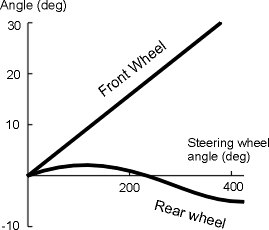
- Prelude's mechanism was very simple, just uses eccentric shaft combine with planetary gear, purely mechanical. Electronic-aided mechanism replaced it in the next generation Prelude in 1992.
4WS - from popular to declining
From the late 80s to today, 4WS remained to be uniquely adopted by Japanese car makers. Western car makers seemed to be not very interested (Audi was rumoured to be developing 4WS for A8, but it did not realise) Even Japanese themselves started losing interest since the mid-90s, dropping 4WS in their models. At the moment of writing, Japanese no longer produce any 4WS cars.Skyline's Super HICAS
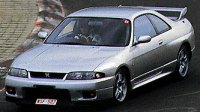 However, Nissan Skyline GT-R still proved that 4WS is worthy for demanding driving. Aided by computer, its Super HICAS system enable tightly-controlled power slide that cannot be implemented by any alternatives. When attacking a corner, the rear wheels will steer in reverse first in order to sharpen the initial steering response. Then, when sensors sense that the car responds to steering, the rear wheels will steer in the same direction as the front wheels, thus immediately introduces rear-tyre slip which help adjusting the attacking angle. Since the computer is monitoring the whole process, the amount of oversteering is always under check. You need not to be afraid of losing control.
However, Nissan Skyline GT-R still proved that 4WS is worthy for demanding driving. Aided by computer, its Super HICAS system enable tightly-controlled power slide that cannot be implemented by any alternatives. When attacking a corner, the rear wheels will steer in reverse first in order to sharpen the initial steering response. Then, when sensors sense that the car responds to steering, the rear wheels will steer in the same direction as the front wheels, thus immediately introduces rear-tyre slip which help adjusting the attacking angle. Since the computer is monitoring the whole process, the amount of oversteering is always under check. You need not to be afraid of losing control.- Because ABS has been popular since the mid-80s, I suppose most of you have already known its theory. Anyway, for the sake of those new joining car enthusiasts, I think it would be better to describe it briefly here.
- BMW applied ABS to its road cars in 1979. Then motorcycle in 1987.
- Bosch launched the modern computerised ABS in the early 80s. Mercedes and BMW included it as option of their top of the range.
- In 1985, Ford Granada Scorpio took it as standard equipment, while Chevrolet Corvette made it a very common option. As production scale increased, ABS became cheaper and popular.
- In the mid-80s, Lucas Girling and AP also developed their low price ABS for cars like Ford Escort and Fiat Uno. Both served only the front wheels.
- Today, even mini cars offer ABS as standard.
Basic theory
You might think that optimal braking is implemented by completely locking all the wheels. No, law of physics tells us that the coefficient of friction between the ground surface and a static object is always greater than a moving object. If the tyres are sliding on the road surface, the friction between road and wheel will not be maximum. Therefore, the maximum braking occurs when the wheels are braked up to the level that the wheels just do not slide.To ensure the shortest stopping distance, ABS applies intermittent braking in very high frequency. This avoid complete lock up of wheels, thus gives the name "Anti-Lock Braking System".
Another advantage of ABS is letting the driver to keep controlling the car during braking. Before ABS appeared, cars lock up during braking, thus unable to be steered to avoid collision. With ABS, while slowing down the car, the driver can simultaneously try to steer away from the obstacle in front.
To implement anti-lock braking, ABS system employs speed sensors for individual wheels. If the wheel speed detected differs from the vehicle speed, that means the wheel is sliding, thus the computer will signal the corresponding brake to loose until sliding disappear. The computer will also compare the speed of all wheels, if one or more of them run considerably faster than others, that means the car is losing control, it will apply more brake to that wheel to correct the driving path.
A Brief History
Let me share with you the little bit information I gathered. ABS was originated in aeroplanes. It was developed in order to shorten the distance necessary for landing. It did not appeared in road cars until 1966, when Jensen FF (the first 4WD road car) installed a system developed by Dunlop. That system, called Maxaret, did not employ computer as well as wheel speed sensors. It just employed electronic sensors to avoid locking the disc brakes. Anyway, road testers immediately found its superiority over conventional brakes.What's next. Sorry, my information becomes incomplete since then. The following is the information bits I got :
Significance of ABS
Not only enhance braking, ABS sensors, computer and hydraulic pump also serve as the hardwares for Traction Control, Electronic Stability Control and Artificial LSD (read these topics in the following paragraphs). If not ABS is so popular, these new technology might not have appeared.- Saab 9000's TCS system was one of the earliest Traction Control systems applied to road cars. To Saab 9000 and other front-wheel drive cars, hard acceleration used to cause trouble to the driving wheels. Hard acceleration always causes weight transfer which lightens the front end. This reduces the traction of front wheels, thus causing wheel spin. When wheel spin occurs, the friction between wheels and ground drops considerably so that it takes longer to launch. Moreover, wheel spin also introduces instability.
Besides, the combination of a powerful engine and 2WD always result in wheel spin. This also calls for the need of Tractio Control.
Like other subsequent Traction Controls, Saab's TCS prevents wheel spin by lowering engine output or even applying brakes to the spinning wheels. All these actions are tightly monitored by the microprocessor. Based on essentially the same hardware as ABS, in collaboration with engine management system, TCS adds little cost.
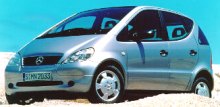 | Electronic Stability Control won't be so well-known without Mercedes A-Class. After the roll-over incident, Mercedes fitted ESP to this car as standard equipment. |
- To understand the purpose of Electronic Stability Control, we must learn some basic steering theory first.
Understeering and Oversteering
- When a driver turns the steering wheel, he would expect the car steers exactly the same direction as he has already inputed, no less and no more. However, in reality, this so-called "neutral steering" is very difficult to obtain. Weight distribution, FWD / RWD / 4WD, suspension geometry, choice of tyres etc. can introduce non-neutral steering. If you won't to know the exact theory behind them, please read theHandling section of technical school.
- Mercedes' ESP (Electronic Stability Program): by Bosch.
- BMW's DSC (Dynamic Stability Control) and CSC (Cornering Stability Control): also by Bosch, but different program leads to slightly different character.
- GM's "Active Handling Chassis Control System": by Delphi. It is installed in Corvette and emphasis less intervention, thus allows more oversteering that a sports car requires. Cadillac Seville has a less sporty system.
- Others: Honda VSA, Mitsubishi ASC, Toyota and more car makers also developed their ESC recently.
Correct understeering and oversteering by ESC
Electronic Stability Control appeared in just several years ago. It was (again) pioneered by Bosch, helped by its first client, Mercedes-Benz, as they tested the ESC-equipped 600SEC coupe extensively in snow. Its objective is to correct extreme understeering and oversteering when the car corners too fast or on slippery surfaces. In other words, it ensures cornering stability.Stability control is the next logical evolution of ABS and Traction Control. It has ABS's hardware and two additonal sensors: steering-wheel angle sensor, which measures the rate the steering wheel is turning, and yaw sensor, which measures the rate the vehicle is actually turning. By comparing them, computer will know if the vehicle is oversteering or understeering.
On slippery surfaces or aggressive maneuver, if the car understeer seriously, the computer will actuate the brakes on the inside rear wheel, just hard enough and just long enough to correct the steering behaviour. Some systems like Bosch's can also reduce the engine output to cooperate.
When the car oversteer seriously, the outside front wheel will be braked instead.
Limitation of ESC
Unlike 4WD and 4WS, Electronic Stability Control cannot raise cornering limit. It just prevent the car from exceeding the limit through intelligent control of individual wheels. Therefore, it is a security system for unexpected conditions.Unless you are a novice driver or your car is very unbalanced, ESC cannot help you to corner faster. By opposite lock and cooperation of braking, human can do better than computer, at least until today. Therefore, most good drivers like to switch off ESC for weekend driving. As a safety backup device for daily drive, however, ESC is worthwhile.
Different Versions of ESC
 | Limited Slip Differential (LSD) can be artificially implemented by using ABS hardware with additional program. Here I take Bosch-Porsche's ABD (Automatic Braking Differential) as an example. When ABS sensor detected tyre slip in one wheel, ABD program will actuate the brake on that wheel. As the wheel locks up, differential will transfer torque to the other wheel which has traction, so the car can get out of trouble quickly. That's all !! Too simple ? |
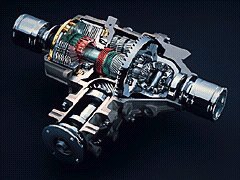
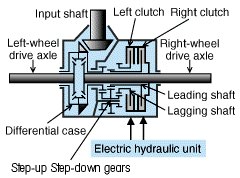
- Somewhat similar to ABD, but Active Differential operate all the time during cornering, unlike ABD that operate when tyre slip occurs. According to Honda and Mitsubishi, Active Differential trasmit more torque to the outside wheel, thus quicken cornering action. I don't know how effective it eventually will become, but at this stage their Active Differential-equipped cars, Lancer GSR Evo V and Prelude ATTS, have not shown significant advantage.
Anyway, we still spend some time to study it .... basically, it implements active torque transfer by using the 2 clutches incorporated inside the differential - one of them control the right wheel and one control the left. When computer think it is necessary to transfer more torque to one of the wheels, it tightens the clutch of the opposite wheel, thus more torque will be sent to the desired wheel. Since it uses clutch instead of ABD's brake, it can precisely control the torque distribution, without locking a wheel. This guarantees a smooth operation that can be used all the time.
 There's relatively less throughout for brake discs during the past 20-30 years. The most powerful disc brakes are still ventilated, cross-drilled and made of cast-iron, although larger wheels enable larger diameter of brake discs. There's relatively less throughout for brake discs during the past 20-30 years. The most powerful disc brakes are still ventilated, cross-drilled and made of cast-iron, although larger wheels enable larger diameter of brake discs. For calipers, road cars today still employ single caliper per disc. Each caliper is actuated by up to 4 pistons ("4-pot") or a few racing-biased cars may even employ 6-pot calipers. The caliper is made in a single piece - so called "monobloc" - and made of aluminium. |
Brake Assist
According to Mercedes, most drivers (especially women) do not brake as hard as they would have thought during accident. Analysing the Braking Pedal Effort vs Time curve will find the braking pedal effort easily fade because of the lack of physical effort. Some people's feet are not accelerative enough to brake hard quickly. As a result, collision may still happen no matter how strong the brakes are.Therefore many Mercedes cars are installed with BAS (Brake Assist System) to artificially accelerate and enhance the braking effort.
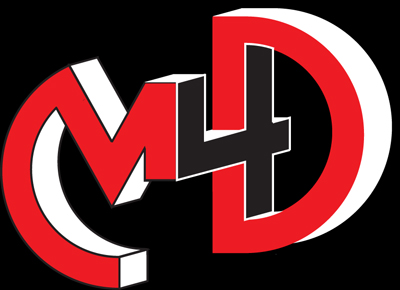
 Obviously, cast-iron disc is the heaviest part of a brake - about 8 kg each, or 32 kg per car. Aluminium alloy discs are used in the base Lotus Elise. Though light, they were less resistant to heat and fade, thus more powerful Elises still employ conventional cast-iron disc.
Obviously, cast-iron disc is the heaviest part of a brake - about 8 kg each, or 32 kg per car. Aluminium alloy discs are used in the base Lotus Elise. Though light, they were less resistant to heat and fade, thus more powerful Elises still employ conventional cast-iron disc.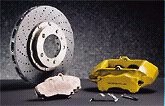 Recently, Porsche introduced a breakthrough to the 996 Turbo - ceramic disc brakes. Ceramic disc is highly heat and fade-resisting. Moreover, it is just 4 kg each, or half of a conventional cast-iron disc, thus save 16 kg per car. This benefit performance as well as ride quality (because of lower unsprung weight). The ceramic disc is based on specially treated carbon-fibers that are siliconized at 1,700°C in a high-vacuum process.
Recently, Porsche introduced a breakthrough to the 996 Turbo - ceramic disc brakes. Ceramic disc is highly heat and fade-resisting. Moreover, it is just 4 kg each, or half of a conventional cast-iron disc, thus save 16 kg per car. This benefit performance as well as ride quality (because of lower unsprung weight). The ceramic disc is based on specially treated carbon-fibers that are siliconized at 1,700°C in a high-vacuum process.